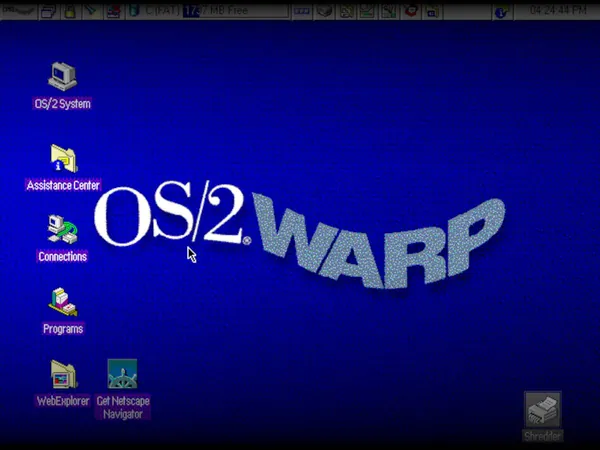
How OS/2's Untimely Demise Forged Today's Software Landscape
2025-01-05
Author: Wei Ling
Introduction
Recent revelations from a 1995 Usenet post by Gordon Letwin, the lead architect of Microsoft's OS/2 initiative, have sparked a renewed examination of the operating system's failure and its lasting ramifications on the tech industry. This old post hinted at the inherent issues that led to OS/2's downfall, which would ultimately pave the way for the dominance of modern operating systems.
The Context of OS/2's Struggles
Letwin's post, made just before the launch of Windows 95—Microsoft's groundbreaking operating system—showed that he was still grappling with the reasons for OS/2's collapse, even as the company was on the verge of its most successful product launch ever. In hindsight, the landscape of computing was rapidly evolving through the 1980s, with dramatic shifts in both hardware and software that set the stage for a predominately Windows-driven world.
The Flaw of Compatibility
At its core, OS/2 struggled due to its reliance on compatibility with Windows applications. While this may appear beneficial, it ultimately revealed OS/2's critical flaw: the operating system's lack of indigenous applications signified that it was not only trailing behind Windows, but effectively out of the game. This lack of native software and applications was not the cause of OS/2's failure; rather, it underscored Windows' growing dominance as the preferred platform for developers.
Timing and Market Presence
Released nearly two years after Windows 3.0, OS/2 2.0 was already too late to compete effectively. The reality was that, by 1995, Windows had captured the lion's share of the market, leading to a cascade of application developers committing their resources to a single dominant platform. Although OS/2 had initially seen some success with native applications, such as Lotus 1-2-3 and WordPerfect, these early advantages failed to translate into a lasting presence in a market that had shifted dramatically toward Windows.
Architectural Decisions
The crux of OS/2's demise can be traced back to IBM's decision to focus on a 16-bit architecture during the critical early development stages, which ultimately limited the system's capabilities. While Microsoft was aware that the future lay with the more advanced 80386 architecture, they were bound to IBM's vision, which was mired in the past. This misalignment hampered both companies and stunted OS/2's growth.
Windows 95's Ascendancy
The announcement of a beta version of Windows 95 over one year prior indicated that momentum had shifted irrevocably. For many users, the attractive user interface and enhanced hardware compatibility of Windows 95 became an irresistible draw, leading even reliable OS/2 users to abandon ship. Under pressure from competition, Microsoft shaped Windows 95 to leverage the hardware advancements that OS/2 failed to embrace.
Legacy and Lessons Learned
As history unfolded, Microsoft's tactical pivot to create an operating system that offered compatibility with emerging hardware paved the way for Windows NT—an architectural evolution that paid off in dividends. The promise of a 32-bit operating system that could better exploit advancing technology contributed to Windows NT's prominence in the enterprise environment.
Conclusion
OS/2’s story ultimately reflects a broader narrative of missed opportunities and shifting tides in technology. As IBM remained committed to outdated hardware support, Microsoft capitalized on the future of computing with Windows NT—a move that since its launch, has built a legacy of more than three decades of performance.
In a world dominated by binary choices between Windows and Unix-like systems today, the tumultuous past of OS/2 serves as a cautionary tale. It highlights the importance of adaptability and foresight in technology—a lesson that resonates within the fast-paced realm of modern software development.
So the next time you fire up your computer, consider how the decisions from yesteryear—both good and bad—continue to shape the software landscape we inhabit today. Understanding this history might just inspire the next wave of innovation in computing!

 Brasil (PT)
Brasil (PT)
 Canada (EN)
Canada (EN)
 Chile (ES)
Chile (ES)
 Česko (CS)
Česko (CS)
 대한민국 (KO)
대한민국 (KO)
 España (ES)
España (ES)
 France (FR)
France (FR)
 Hong Kong (EN)
Hong Kong (EN)
 Italia (IT)
Italia (IT)
 日本 (JA)
日本 (JA)
 Magyarország (HU)
Magyarország (HU)
 Norge (NO)
Norge (NO)
 Polska (PL)
Polska (PL)
 Schweiz (DE)
Schweiz (DE)
 Singapore (EN)
Singapore (EN)
 Sverige (SV)
Sverige (SV)
 Suomi (FI)
Suomi (FI)
 Türkiye (TR)
Türkiye (TR)
 الإمارات العربية المتحدة (AR)
الإمارات العربية المتحدة (AR)